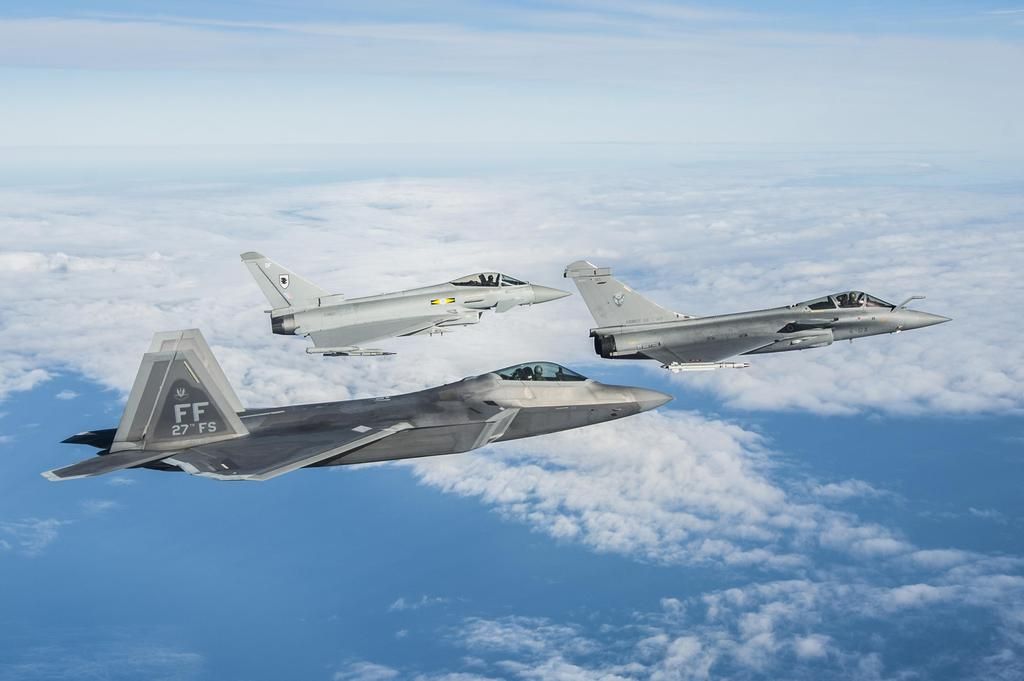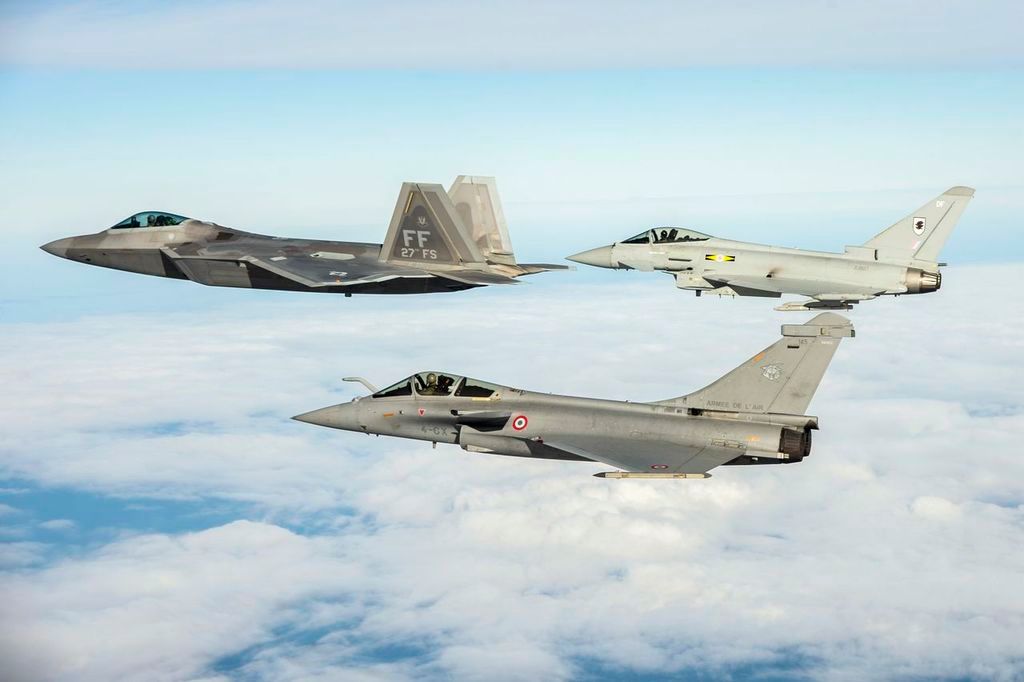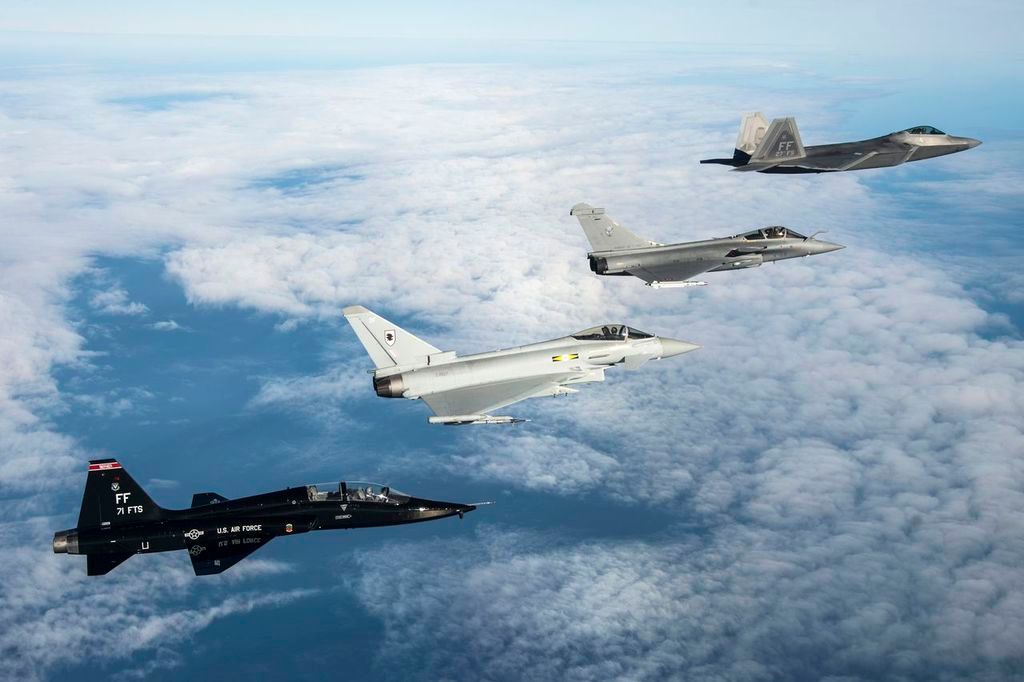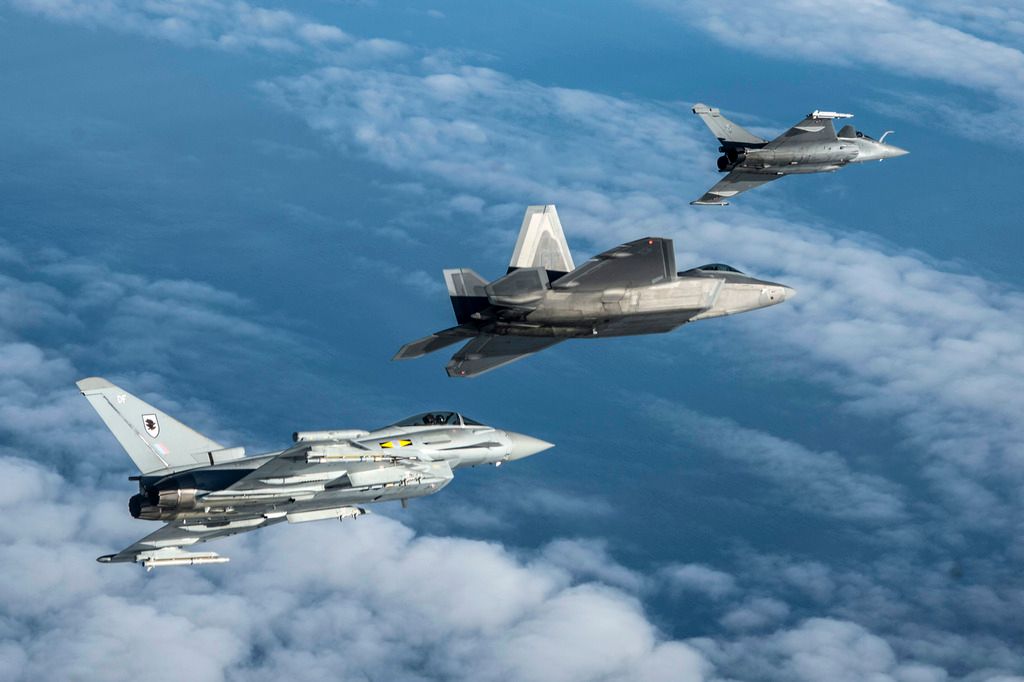I'm aware of the difference and utility of stab+elevator vs stabilator or all flying tail. My point is, a stabilator works in a unified fashion, i.e. not differential, hence can only control pitch.
When those stabilators become capable of differential deflection to controll pitch & roll, like on a Tornado, F/A-18, modern Flankers, Raptor, they are now Tailerons, or "rolling tails".
Or Elevons on tailless airplanes.
I have never heard of the term "tailerons", elevons as you have pointed out are the innermost surfaces on the tailess Delta? Since the Raptor has stabilators, I coined them "stabilons", so you may be correct.
As to the nozzles they are referred to as 2D nozzles as opposed to the 3D nozzles of the Russian birds. They do not control yaw as does the Russian OVT. I believe they are 2D and hence able to be deflected in opposing direction, but here again you may well be correct.
In the flight demo, the Raptor is not recovered in the tail slide until it is indicating 50MPH in reverse, its easy to see the rear surfaces fighting to hold the aircraft in the vertical, as they frantically flap around? LOL
I'm not sure if I'm missreading you here, but I'm fairly certain the TVC nozzles are not capable of differential deflection and thus only contribute to pitch control, but not directly to roll control. I believe I read that somewhere, but right now cannot find something definitive one way or the other. Anyhow, I think the engines are to close together anyway to be meaningfull contributers to roll.
What that TVC does for roll is that by taking over pitch authority, it frees the tailerons of that function to let them focus on rolling the jet.






